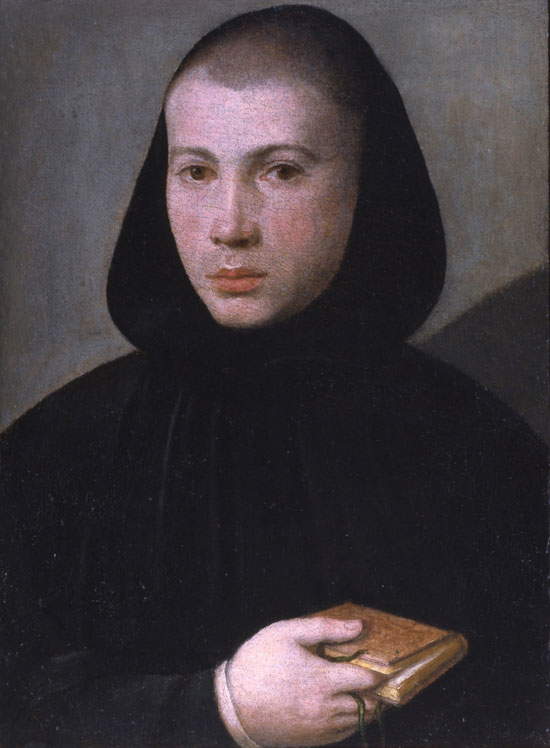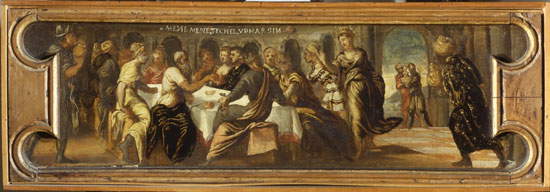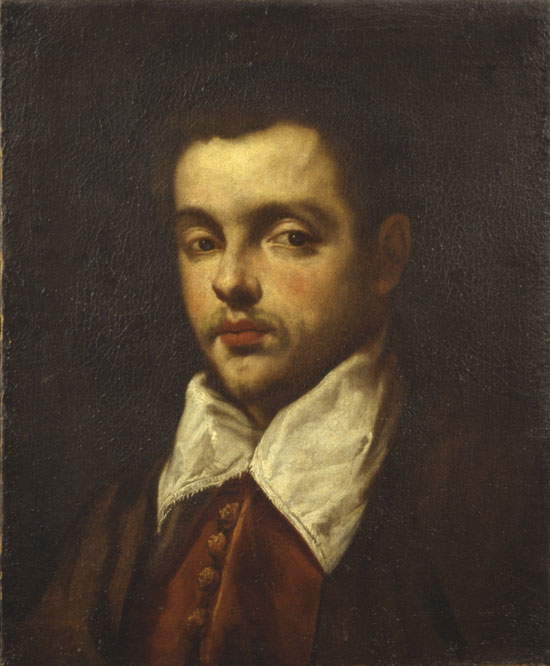by Federico Giannini (Instagram: @federicogiannini1), published on 20/11/2015
Categories: Opinions
- News Focus / Disclaimer
After the robbery of Verona's Castelvecchio Museum, the mayor and all politics should ask themselves whether enough is being done for culture. We have our doubts.
We at Finestre Sull’Arte have visited Verona’s Castelvecchio Museum many times-we consider it one of our favorite museums. So it was a very hard blow to read, this morning, the news of the egregious robbery that allowed a gang of thugs to steal seventeen paintings from the museum, some of them among its major masterpieces: Pisanello’s Madonna of the Quail, Mantegna’s Holy Family, Giovan Francesco Caroto’s Portrait of a Child, Rubens’ Lady of the Licnids, several paintings by Tintoretto.
We do not consider the theft-for-hire hypothesis to be very plausible: it sounds strange that even the most ruthless collector might not be aware of the enormous risks that a theft of this magnitude carries. It is probable that it is an operation similar to the one by which, in 1992, Felice Maniero and his gang took away some very important paintings from the Galleria Estense in Modena in order to use them, as a bargaining unit, in a negotiation with the judiciary. Certainly, in Italy, a theft like last night’s is as sensational as few others in history: perhaps, only the 1975 theft of the three paintings (two by Piero della Francesca and one by Raphael) from the Galleria Nazionale delle Marche in Urbino is comparable, in terms of the value of the works. However, the one of forty years ago was pulled off by inexperienced thieves who hoped to resell the paintings: hopes obviously in vain, and if today we can still admire those works, we owe it to the Carabinieri who promptly recovered them just before the thugs destroyed them. Instead, the robbers who acted at Castelvecchio, judging from the testimonies of the personnel involved, seem to have moved with a skill typical of those who knew exactly what to look for. Although it is unclear why, in addition to the museum’s major masterpieces, the thieves also took less valuable works.
We could still ask a thousand questions about the gang’s motives for incapacitating museum staff and stealing unique paintings that are fundamental to art history-only the investigation will help us get a clearer picture of the situation. What is certain is that underlying this theft is, once again, the lack of interest in culture. The City of Verona has issued a statement saying that an armed security guard is in charge of guarding the Castelvecchio Museum. But even if armed, it is still only one person who has to take care of an entire museum, as large in size as the Castelvecchio Museum is, and anyone who has been there at least once will have no trouble understanding what it means to entrust the nighttime guarding of such a large museum to a single vigilante. And indeed, the thugs had, it seems, no great trouble neutralizing the only employee who was present (the robbery occurred as the museum’s closing operations were taking place, around 8 p.m. last night, Thursday, Nov. 19) and getting the better of the security guard.
The mayor of Verona, Flavio Tosi, will therefore have to ask himself more than one question as to whether the level of vigilance that the municipality imposed for the Castelvecchio Museum was adequate. Certainly, the images of the empty walls that have begun to circulate in recent hours strongly jar with the footage of the streets of our cities where army and police trucks prowl because politics wants to show us that, because of the latest terrible events related to terrorism, the level of alert in our country has been raised. The problem, as mentioned, is that culture is not valued, or culture is only remembered when it needs to make noise. Verona is a case in point: Mayor Tosi fantasizing about donating the ancient cover to theArena, and the Castelvecchio Museum humiliated by the presence of a single security guard to take care of the entire night watch, and now also fatally scarred by a theft that should never have occurred. And still Tosi had nothing better to say than that “the regulations that are applied and the security parameters do not make theft impossible, they do it even in the Louvre.” These are serious statements: not only because it is useless and irresponsible to console oneself with the fact that even the Louvre has suffered thefts, but also because the latest incidents that have occurred at the Parisian museum are not even remotely comparable to what happened in Verona, both in terms of the manner and the size of the heist. It is quick, however, as many are doing in these hours, to impute a lack of sensitivity to culture to the sole political party that allowed Tosi to become mayor: it is true that culture is almost completely absent from the programs of certain factions, but it is also true that disinterest in culture is, unfortunately, across the lines.
Many will therefore have to stop and reflect after what happened last night. Politics, which will have to ask itself whether what it does for culture is sufficient to guarantee museums, libraries, archives and institutes the funds they need to work in optimal conditions. And whether it can obviously guarantee us an adequate level of security, since it turns out to be so easy to rob a museum despite all the alerts, which in the face of such an event almost seem to border on the grotesque. The media, who seem to ignore what should be in all respects front-page news in national newspapers, and instead is relegated to the last minutes of the news or to scant space on the websites of the major newspapers, another sign that culture, which should be a founding specification of our national identity, does not interest us all that much. And all those who, in general, see culture as a means of making money rather than as the basis of our civilization: as of last night, it is as if our civilization has lost a part of itself.
Needless to say, we feel bitter, disappointed, abandoned by the institutions and, as far as we at Finestre sull’Arte specifically are concerned, affected in the personal as well, because we have always retained wonderful memories of Verona and the Castelvecchio Museum related to our own events as well. In short: it is as if, since last night, a part of ourselves has also been severely mortified. We expect, therefore, serious answers from those in charge. It is necessary to demand that culture return to a central role in the country’s development strategies, it is necessary to return to granting culture adequate resources for its operation, and there will also be a question of whether the current security protocols are sufficient to guarantee the safety of our works. Of course: stopping theft will be impossible. But it will also have to be impossible to bring about blatant robberies like the one in Verona.
All the works stolen from the Castelvecchio Museum.
 |
| Pisanello, Madonna of the Quail (c. 1420; tempera on panel, 54 x 32 cm) |
 |
| Andrea Mantegna, Holy Family (c. 1490-1500; tempera on canvas, 76 x 55.5 cm) |
 |
| Pieter Paul Rubens, Lady of the Lycnidae (1602; oil on canvas, 76 x 60 cm) |
 |
| Giovan Francesco Caroto, Portrait of a Child (c. 1523; oil on canvas, 37 x 29 cm) |
 |
| Giovan Francesco Caroto, Portrait of Benedictine Monk (c. 1520; oil on canvas, 43 x 33 cm) |
 |
| Jacopo Tintoretto, Madonna of Milk (1540-1545 approx.; oil on canvas, 89 x 76 cm) |
 |
| Jacopo Tintoretto, Judgement of Solomon (1541-1542; oil on panel, 26.5 x 79 cm) |
 |
| Jacopo Tintoretto, Transporting the Ark of the Covenant (1541-1542; oil on panel, 28 x 80 cm) |
 |
| Jacopo Tintoretto, Banquet of Baltassar (1541-1542; oil on panel, 26.5 x 79 cm) |
 |
| Jacopo Tintoretto, Samson (1541-1542; oil on panel, 26.5 x 79 cm) |
 |
| Jacopo Bellini, Penitent Saint Jerome (c. 1450-1460; tempera on panel, 95 x 65 cm) |
 |
| Domenico Tintoretto, Portrait of Marco Pasqualigo (c. 1588; oil on canvas, 48 x 40 cm) |
 |
| Hans de Jode, Landscape (1657; oil on canvas, 70 x 99 cm) |
 |
| Hans de Jode, Seaport (1657; oil on canvas, 70 x 99 cm) |
 |
| Giovanni Benini, Portrait of Girolamo Pompei (1790; oil on canvas, 85 x 63 cm) |
 |
| Bottega of Domenico Tintoretto, Portrait of a Venetian Admiral (oil on canvas, 110 x 89 cm) |
 |
| Tintoretto’s circle, Portrait of a Man (oil on canvas, 54 x 44 cm) |
Warning: the translation into English of the original Italian article was created using automatic tools.
We undertake to review all articles, but we do not guarantee the total absence of inaccuracies in the translation due to the program. You can
find the original by clicking on the ITA button. If you find any mistake,please contact us.
















